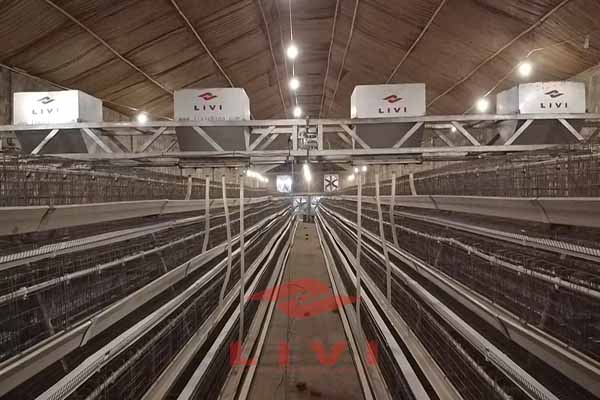Optimizing Chicken Cage Layout for 40,000 Birds: A Comprehensive Guide
Understanding the Layout Requirements
Managing a large-scale poultry farm with 40,000 birds requires a well-thought-out chicken cage layout. The layout plays a crucial role in ensuring the health, welfare, and productivity of the flock. Here are the key factors to consider when designing a layout for 40,000 birds.
- Space Allocation: Each bird should have at least 0.6 square meters of space. This ensures comfortable living conditions and minimizes the risk of disease.
- Feed and Watering System: A reliable and efficient feeding and watering system is essential to maintain the health of the birds. Automated systems can save time and reduce labor costs.
- Airflow and Ventilation: Adequate airflow and ventilation are crucial for maintaining a healthy environment. The layout should allow for cross-ventilation to prevent the buildup of ammonia and other harmful gases.
- Manure Management: A well-designed manure removal system is necessary to keep the farm clean and hygienic. This can include solid manure removal or slurry systems.
Chicken Cage Layout Design for 40,000 Birds
When designing a layout for 40,000 birds, it is important to consider the following aspects:
- Row Spacing: Ensure that there is enough space between rows for easy access and maintenance. A recommended distance is 2 meters between rows.
- Cage Placement: Place the cages in a way that maximizes the use of space while ensuring proper airflow and lighting.
- Access Points: Include designated access points for feeding, watering, and cleaning. These should be easily accessible and well-lit.
Case Study: Successful Chicken Cage Layout for 40,000 Birds
A recent project by LIVI Machinery involved designing a chicken cage layout for a 40,000-bird farm. The layout incorporated the following features:
- Space Allocation: Each bird was provided with 0.6 square meters of space.
- Automated Feeding and Watering: The farm utilized automated feeding and watering systems, significantly reducing labor costs.
- Airflow and Ventilation: Cross-ventilation was incorporated into the design to maintain a healthy environment.
- Manure Management: A solid manure removal system was implemented to keep the farm clean and hygienic.
The project was a success, with the farm experiencing improved productivity and health of the birds.
Conclusion
Designing an efficient chicken cage layout for 40,000 birds is crucial for the success of a large-scale poultry farm. By considering factors such as space allocation, feeding and watering systems, airflow, and manure management, you can create an optimal environment for your birds. Contact LIVI Machinery today to get a free chicken cage layout design and equipment quote.





